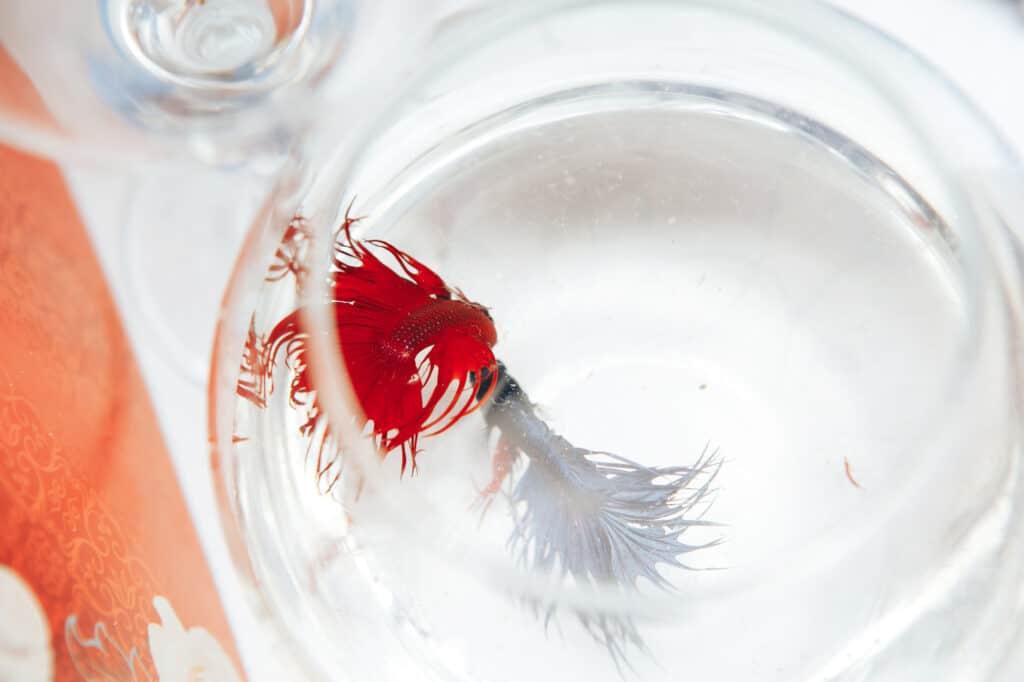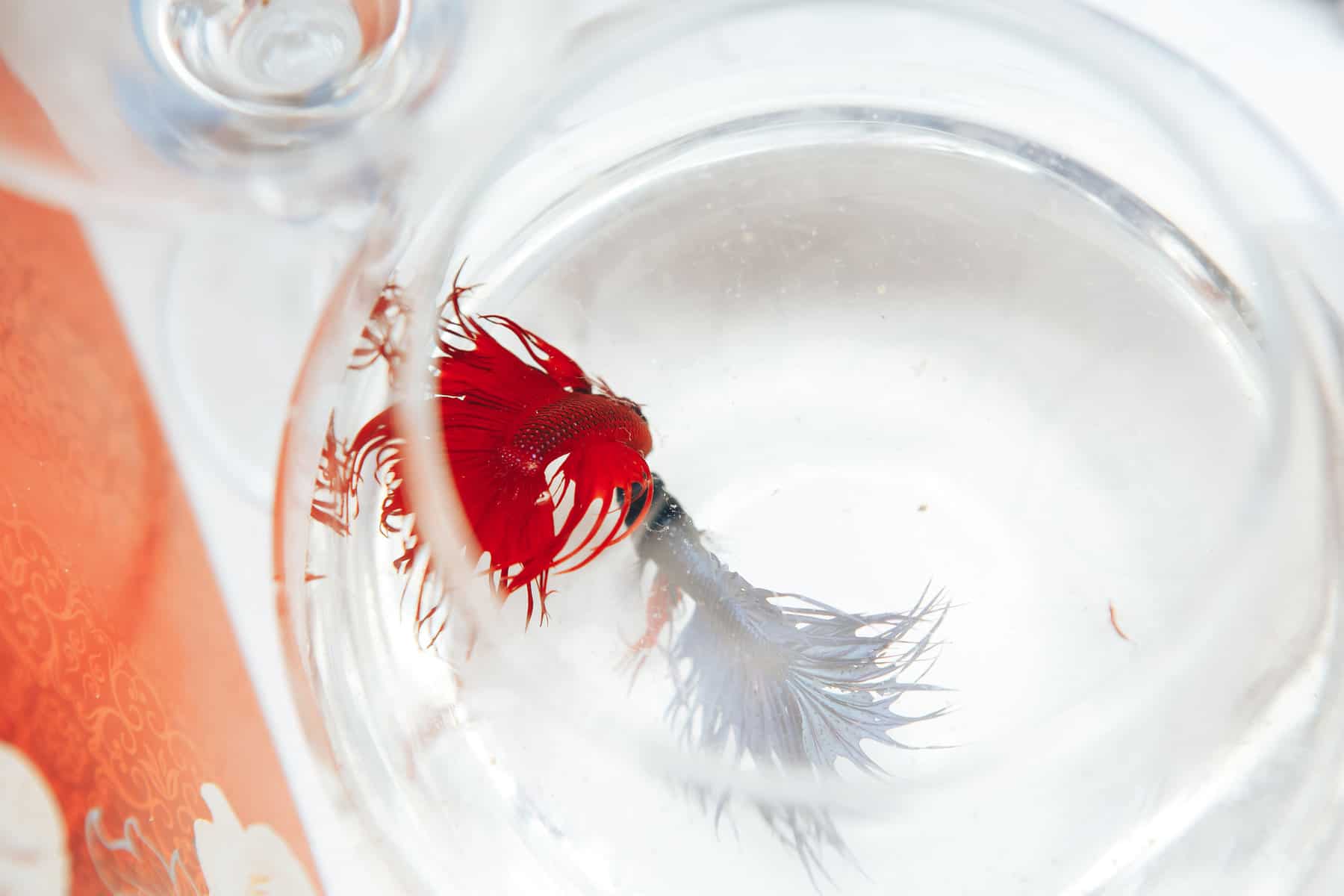The composition of the water in your betta’s tank is of utmost importance in keeping your fish happy and healthy.
Allowing your fish to live in a tank with the incorrect water temperature, pH level, dGh level, or contaminants such as chlorine and metals can cause extreme discomfort and even harm to your fish.
So, in order to keep your pet safe, these parameters should be closely monitored and amended when needed.
Now you might be wondering how to take care of your fish while altering the water’s temperature or adding a water conditioner, as the betta can’t actually be in the tank while you’re doing this.
In this article, we will explore how and where to safely keep your betta when conditioning the water, and how to transfer them back into the tank.
Where Should I Keep My Betta When I Condition My Tank Water?
When conditioning your tank water, it’s best to temporarily house your betta in a small container, such as a transportation tank.
A transportation tank can be purchased in a pet store. These are frequently sold as tanks for bettas, spiders, or beetles.
It’s important to note, though, that although these small tanks are marketed as being suitable for bettas, they’re far too small for them to live in comfortably, and while they may be able to survive in such a small space, they definitely won’t thrive.
These small tanks are still a good investment for when you need somewhere to store your Betta when conditioning the water in your tank, or when giving your tank a thorough clean.
If you don’t have a small holding tank, don’t panic! You can just as easily use a cup or jug to house him temporarily and he should be just fine.
How Long Can a Betta Stay In a Cup Filled With Tap Water?
You’re can house a betta in tap water while you’re conditioning the water in the tank, but this isn’t recommended, particularly if your fish is sick or in ill health.
Tap water isn’t healthy for any fish breed, due to contaminants in the water such as metals, chlorine, and chloramine, which are reduced with the use of a water conditioner when used in tanks.
However, if you’re in a pinch, you can keep your betta in tap water for around 24 hours before removing and returning him to his regular tank.
If you’re storing your betta in a cup of water, try to utilize your tank’s old water instead of tap water, provided the pH or dGh aren’t at harmful levels. This is an ideal solution when you’re storing your fish when cleaning your tank.
While the old water may not be clean or well-oxygenated, at least there won’t be many contaminants in it that could harm your fish.
In the case of using the tank’s water to house your fish in a cup or small container, try to aim for no longer than a period of 48 hours.
How Long Should I Wait to Put My Betta in the Tank After I Condition the Water?
You should remove your fish immediately before adding the water conditioner, as this will ensure that your fish isn’t out of the tank longer than it needs to be.
Once the water conditioner has been added, you’ll want to wait for approximately 24 hours before adding your fish back into his home.
This is because when you add a water conditioner to a tank, you need to wait a while for the effects to take place.
Water conditioners are used to remove heavy metals, chlorine, and chloramine, so your fish should remain out of the tank until these have been removed from the water.
Waiting 24 hours for the contaminants to be extracted and evaporate will ensure the water is then safe for your fish to be reinhabited.
What Is the Ideal Water Temperature For Betta Fish?
Other than removing unwanted contaminants from the tank, you’ll want to ensure that the pH, dGh, and temperature are all correct for your species of betta.
Generally speaking, splendens, the most common breed of betta, will require a range from 75-85 degrees Fahrenheit. They’re tropical species that require warm waters and must be kept out of direct sunlight, in order to mimic their natural habitat.
The pH of the water should be between 6.5 and 8, and with such a wide range, this makes it fairly easy to regulate.
The dGh of the water should be between 3 – 4.
You must ensure that your water is clean, has been conditioned, and that the temperature and water parameters are all suitable for your fish before you return him to his home.
Do I Need to Acclimate My Fish When Returning Him to the Tank?
Acclimating your fish is always a good idea when transferring him from one body of water to another.
Whether there is a large difference in water temperature or parameters from the water your fish is currently in, introducing him to a vastly different environment can cause shock, which can be fatal to your fish.
The best way to acclimate your Betta is by first adding the container with your fish, half full to the top of your tank. Leave the container to first float for a while as the temperature inside the holding tank changes to match that of the main aquarium.
After about 30 minutes, begin slowly adding some of the aquarium’s water into the holding tank so that the levels don’t change all at once for the water your fish is inhabiting.
Do this two or 3 times before fully submerging the holding tank and allowing your fish to swim free into his clean and healthy home.
So, there you have it. Simple really.
Temporarily housing your betta while you tend to his aquarium is in fact, very simple. This is mostly down to the betta fish being such a hardy species.
Returning him to the tank should be simple, and he will recover from his little ordeal fairly quickly!

